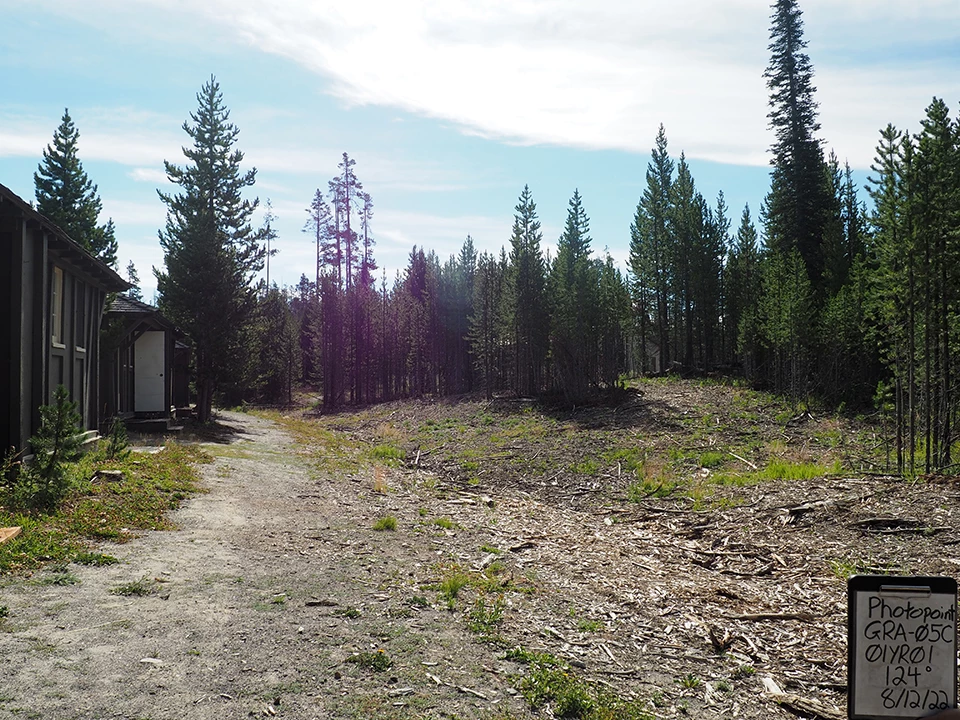Last updated: December 2, 2022
Article
Multi-year defensible space project in Lake Village of Yellowstone protects from threat of wildfire
The $405,000.00 project was funded through the Bipartisan Infrastructure Law to reduce large dead and down fuel and small trees that act as ladder fuels, vegetation that helps transfer fire from the ground to larger trees. It will also increase canopy height and significantly reduce the potential for crown fires, fires that spread across treetops, by removing vegetation using mechanical and manual methods. Masticators, machines that cut vegetation into small pieces, are used for the mechanical method to reduce the large dead and down fuel and small trees. Hand crews also manually repair and rehabilitate these areas by removing or improving any unnatural berms, additional trees, and other impacts caused by mechanical equipment. Typically, hand crews are employed to fine tune and enhance treatments after masticators complete their work. The crews also take action to protect sensitive habitat and to ensure a diversity of vegetation throughout the project area, including giving preference to maintaining whitebark pine wherever feasible.
This developed area of Yellowstone National Park, which includes 257 structures, 136 of which are historic, is better protected from unplanned wildfire. “In its current condition, there is a likelihood that much of Lake Village will not be defensible if a large wildfire establishes between Lake Village and the Elephant Back ridge. The alternatives to substantial fuel reduction and forest stand modification in the wildland-urban interface are unacceptable. The unfortunate alternative is loss of modern and irreplaceable historic structures, which is not a viable option for Yellowstone National Park,” stated fire management officer, John Cataldo.


Left image
An example of previous thinning work completed in the Grant area of Yellowstone National Park. Before completion of project.
Credit: NPS
Right image
An example of previous thinning work completed in the Grant area of Yellowstone National Park. After completion of project.
Credit: NPS
Yellowstone’s fire effects crew has extensively monitored the project area and recorded its pre-treatment state. Monitoring plots are installed so data can be collected after treatment on downed woody fuels, canopy base height, and canopy bulk density. These data determine if the main goal of the treatments, the reduction of crown fire potential, is met.
The NPS aggressively suppresses wildfires that threaten people, property, infrastructure, or key natural and historic features both inside and outside parks. The Lake Village Wildland-Urban Interface Fuels Reduction project provides fire personnel a safer environment with more opportunities for success in suppressing unwanted wildfires that may threaten this area.
Yellowstone National Park also partnered with Big Thicket National Preserve in autumn 2022 to bring in an experienced masticator operator to conduct some of the mechanical work and to train Yellowstone staff on safely and efficiently operating this specialized equipment. The work this team conducted helped complete a similar fuels reduction at Old Faithful that was started during a wildfire event in 2020. In addition to this support, a GS-11 fuels specialist was hired using Bipartisan Infrastructure Law funds to carry out and expand on this critical fuel reduction work.
